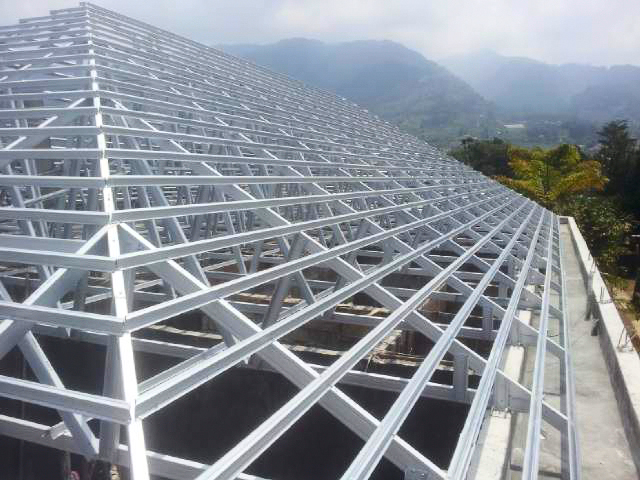Heat gain can be reduced by using materials with high thermal resistance, which inhibits the flow of heat through the material. The largest surface receiving heat is the roof. Roofing materials generally have lower thermal resistance and heat capacity than walls. Accelerating heat transfer from the top is somewhat difficult because it would increase the weight of the roof. Heat resistance from the top of a building can be increased in several ways, such as by creating a ceiling cavity. The use of reflective heat reflectors will also increase heat resistance.
Other ways to reduce heat gain include:
1. Reducing the surface area facing east and west.
2. Protecting walls with shading devices. Heat gain can also be reduced by minimizing heat absorption from surfaces, especially roof surfaces.
Light colors have low solar radiation absorption, while dark colors do not. High heat absorption will cause the surface temperature to rise, making it much higher than the outside air temperature. This creates a large temperature difference between the two surfaces, which leads to significant heat loss.
Air Flow Through Buildings
The purposes of air flow or ventilation are: 1. To meet health needs, namely providing oxygen for respiration, removing smoke and water vapor from the room, reducing the concentration of gases and bacteria, and eliminating odors.
2. To meet thermal comfort needs, removing heat, and helping to cool the interior of the building.
Heat Radiation
Heat radiation can occur from sunlight directly entering a building and from surfaces that are hotter than their surroundings. To prevent this, sunshading devices can be used. Heat radiation from a surface will cause thermal discomfort to occupants if the air temperature difference exceeds 40°C. This often occurs on the lower surface of ceilings or roofs.
Natural Daylighting Natural daylighting during the day consists of:
1. Direct sunlight.
2. Diffuse sunlight.
In Indonesia, this light should be optimally utilized for daytime lighting inside buildings. However, for this purpose, direct sunlight is not desired to enter buildings because it will cause heating and glare, except for morning sunlight. Therefore, skylight should be utilized for lighting.
For multi-story buildings, the higher the building floor, the stronger the potential skylight that can be utilized. Skylight reaching the work area can be divided into three components:
1. Skylight.
2. External reflection.
3. Internal reflection.
Of these three components, the skylight contributes the largest portion of the illumination level produced by a light hole. Factors that influence the level of illumination at the work area are:
1. The size and position of the light hole.
2. The width of the eaves.
3. Obstructions in front of the light hole.
4. The reflection factor of light from the interior surfaces of the room. 5. The exterior surface of the building around the light opening.
2. Characteristics of Tropical Architecture
High roofs with a slope of over 30 degrees. The space under the roof serves to reduce heat. Wide eaves/overhangs reduce the splash effect of rain and wind. They also block direct sunlight from entering the building. Ventilation holes are provided for cross-ventilation, ensuring a comfortable indoor temperature. In certain areas, stilt houses are a key feature, designed to ward off natural disasters and the threat of wild animals. Tropical designs generally utilize natural materials found locally.
 Bahasa Indonesia
Bahasa Indonesia  Inggris
Inggris
 Bahasa Indonesia
Bahasa Indonesia  Inggris
Inggris
 Bahasa Indonesia
Bahasa Indonesia  Inggris
Inggris
 Tropical architecture is architecture found in tropical regions and has adapted to tropical climates. Indonesia's tropical climate significantly influences the form of residential buildings, particularly traditional houses. Climatic conditions such as air temperature, solar radiation, wind, humidity, and rainfall influence the design of traditional houses. In ancient times, people attempted to adapt to the prevailing climate conditions in order to create comfortable and safe designs.
Tropical architecture is architecture found in tropical regions and has adapted to tropical climates. Indonesia's tropical climate significantly influences the form of residential buildings, particularly traditional houses. Climatic conditions such as air temperature, solar radiation, wind, humidity, and rainfall influence the design of traditional houses. In ancient times, people attempted to adapt to the prevailing climate conditions in order to create comfortable and safe designs.



